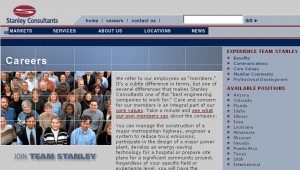In Washington, politicians are making hay with the public’s perception that greedy CEOs and executives were asleep at the switch as their companies circled the drain.
So far, the only concrete action taken has been the limit placed on executive compensation at financial institutions that receive Federal bailout money under the TARP program. But, that doesn’t mean that more noise isn’t being made in more quarters than ever before.
The problem, of course, is perception. Most people, and even most investors, have never risen into the executive ranks, so they have no idea what the view looks like from there. Even fewer have ever been privy to the inner workings of a corporate board. It is no wonder, then that from the outside, it looks like a seat on the Board of Directors is a free ride and that everyone from CEOs and CFOs to junior executives are grossly overpaid fat cats who smoke cigars and laugh inside backrooms as thousands of “real workers” are laid off.
Investor Relations and the Perception of Executive Pay
While it is undoubtedly too much to ask for any IR department to turn around the public perception of CEO and Board member pay, there is still much good that can be done.
Even before the current economic crisis much of the population viewed the high compensation of CEOs and others as nothing more than undeserved mega-salaries that were rubber stamped by do-nothing Boards of Directors who have seemingly never in the history of business found any reason not to award substantial performance bonuses regardless of how far the company had sunk. Investors have given more benefit to company executives under the auspices that if the company is well managed and it (or more specifically its stock) performs well, then who cares how much the guy in the big office makes. Even this goodwill has worn thin among recent revelations.
How then, can something as simple as an IR website make a difference?
First, ask this simple question. Where on the company website can someone find information regarding executive compensation?
How many clicks does it take to get there from the IR homepage? What text is displayed on those clicks? How many people out of 100 would know to look under those clicks.
Second, ask this question. Regardless of where the information exists, does it say anything other than the equivalent of the board will set performance goals and then set compensation based on how well those goals are met?
The answer to the first question is exactly why people, both investors and the general public, think that companies are hiding something when it comes to executive pay. When it comes to how executives are paid and evaluated, it is often easier to find out the percentage change in the amount of depreciation written off against a three-year old take-over target’s assets in regards to… Well, you get the picture.
The answer to the second question is why investors, politicians, and the public think that executive pay is a blank check passed out without regard to any factors whatsoever.
A Better IR Approach
While specific performance objectives and actual target figures are often confidential for a variety of reasons, it does not follow that no information at all can be offered to investors who want to know just how the management of the company they are potentially interested in investing in are being evaluated and paid.
First, offer a better path to information regarding executive pay. Yes, you know, as do many sophisticated investors, that such information is frequently listed under Corporate Governance, or something similar. However, a link from inside the main IR areas can do wonders to decrease the perception that this data is deliberately being hidden.
Second, consider plain language explanations regarding certain compensation features, especially bonuses.
Perhaps nothing rankles Main Street, and their representatives in Congress more than seeing an executive at a struggling company receiving fat performance based awards. The problem often stems from a misunderstanding that all performance metrics are based on “this year” or some other time frame. An executive who joined the company 7 years ago with substantial bonuses for growing earnings by 10% might still be reaping those deserved awards despite the current negative trend, which can still easily be above where the company was 7 years ago.
Simply breaking out a general category of compensation among such broad areas as long-term performance awards, previously met objectives, or something similar can begin to clue in investors that these are not phony bonuses and awards. As an added bonus, it reminds investors that the current management team has had success running the company in the past and that they are likely the best people to right the ship in whatever stormy waters the economic winds have whipped up.
As is often the case, broader more available communication can go a long way in creating a better investor experience and expectation.
 The correlation between the need for superior customer service and stellar customer experiences with brands AND a struggling economy is not rocket science. It makes sense that people are going to be more price sensitive than ever during an economic downturn, but they are also likely to be far more affected by negative or positive customer experiences — and that includes experiences with brands.
The correlation between the need for superior customer service and stellar customer experiences with brands AND a struggling economy is not rocket science. It makes sense that people are going to be more price sensitive than ever during an economic downturn, but they are also likely to be far more affected by negative or positive customer experiences — and that includes experiences with brands.



 Who would have thought that a one-second beer commercial during the Super Bowl would get noticed? Miller.
Who would have thought that a one-second beer commercial during the Super Bowl would get noticed? Miller.